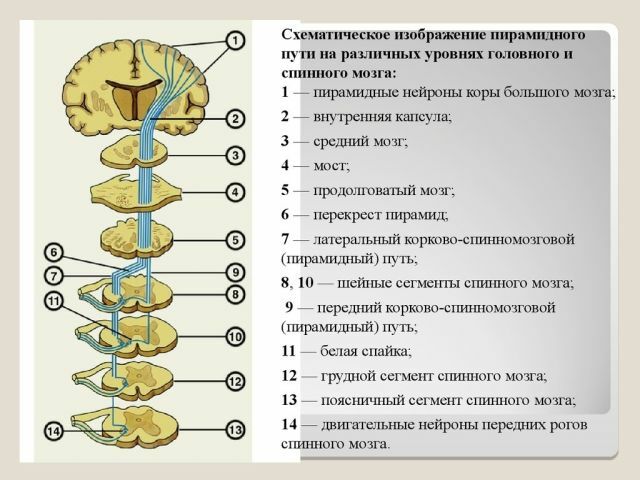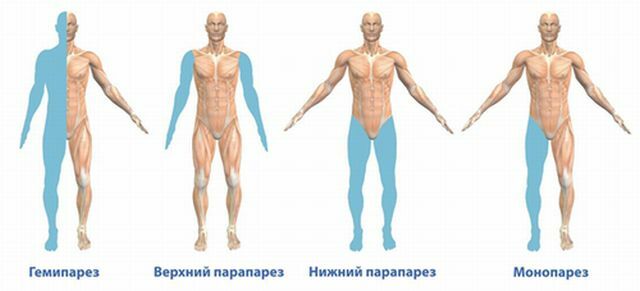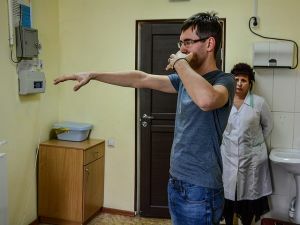 In medical practice, when diagnosing diseases and identifying pathologies, special postures are used. In neurology, the Romberg pose is widely used, which allows analyzing and determining abnormalities in the work of the nervous system.
In medical practice, when diagnosing diseases and identifying pathologies, special postures are used. In neurology, the Romberg pose is widely used, which allows analyzing and determining abnormalities in the work of the nervous system.
Thanks to a quick and fairly simple method of diagnosis, specialists can identify neurological diseases and start treatment faster. In addition, this research technique allows you to detect abnormalities during a simple examination without resorting to analyzes and additional studies.
What is the diagnosis of
The main task of the Romberg test is to determine the violations of the functions of the organs that are responsible for the equilibrium. The systems that are responsible for human equilibrium include:
- vestibular apparatus;
- system proprioception;
- is a brain function.
Diagnostics allows to determine whether there are deviations from the nervous system, possible disruption in the operation of the spinal cord, whether there are abnormalities in the functions of the vestibular apparatus.
Originally there was only one variant of Romberg's pose, now different variants are used. Stopwatches are also used in diagnostics, which allow to obtain a quantitative evaluation of the result.
With this technique, the patient closes his eyes, which allows to determine how great the influence of vision is for maintaining balance, and how well other organs cope with this function.
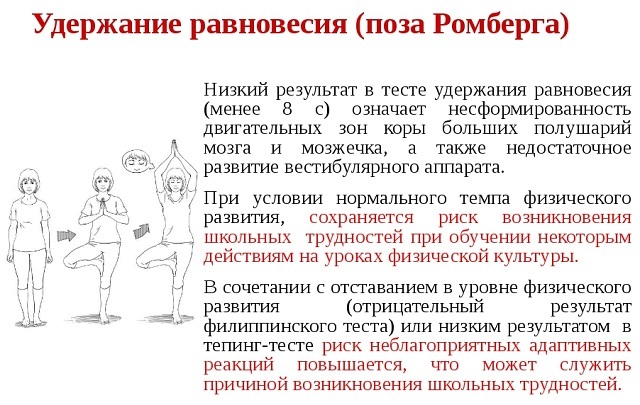
What deviations can reveal the sample
There are quite a few diseases in which this diagnostic technique is used. Depending on the complexity of the disease or a possible pathology, different poses may be used.
Quite often, after using a simple pose, a complicated version of the Romberg test can be used, which will allow you to get more information for diagnosing.
The pose is used for the following diagnostic purposes:
- if cerebellar function is impaired;
- with possible pathologies of the inner ear;
- for suspected central nervous system disorders;
- in cases of spinal cord injury;
- if there are violations of deep sensitivity;
- other neurological diseases are possible;
- possible intracranial inflammatory processes.
How the
is tested In many ways, the test for maintaining equilibrium depends on which particular deviation is diagnosed. In order for the patient to take the correct position in the 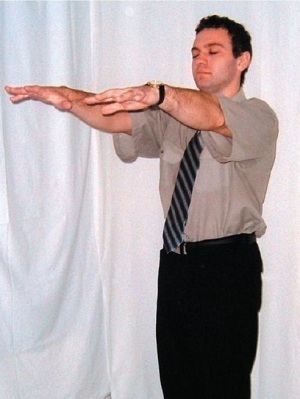 , he needs to be straight, with the legs pressed tightly against each other.
, he needs to be straight, with the legs pressed tightly against each other.
The patient should then stretch his arms in front of him and close his eyes. But the test case is possible, when the eyes are closed, but the hands remain in the lowered position, along the trunk. In this situation, the doctor necessarily supports the patient, avoiding falls and injuries.
If we talk about the field of neurological abnormalities, then in this posture any swaying is taken into account and the main task of testing the symptom of Romberg is to determine the degree of resistance. Time intervals are also taken into account, which are also important for proper diagnosis.
A more complex version of the test involves placing the legs, so that they are on the same line. This happens in the following way: the patient places the legs in such a way that the heel( say the right foot) touches the fingers( the left leg) and they are on the same line.
In this position, the patient should stretch out in front of him and close his eyes. The option is possible, in which the head tilts back.
Diagnosis of Parry Romberg's syndrome in practice:
What does the staggering of
In how much a person is able to keep balance in a given posture, different parts of the nervous system respond. If a loss of balance, staggering, wiggling, or deviation to the side is observed during the check of the 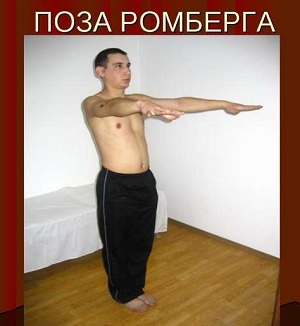 Romberg pose, this means that there is a neurological disease.
Romberg pose, this means that there is a neurological disease.
There are situations when the patient loses balance during the passage of the diagnosis and tends to one side. Such a deviation may indicate a possible damage to the hemisphere of the cerebellum, taking into account the side to which the patient fell, which speaks specifically of the side of the lesion.
There are also possible situations when a person deviates back or falls, such a manifestation can talk about possible diseases of the psychic sphere. But it is also possible to simulate the patient, since this behavior is more related to the mental state.
To avoid misdiagnosis, doctors who perform diagnostics pay attention to the nasal muscles.
Self-testing
Quite often a Romberg sample is taken at home, in no case to establish a diagnosis, but rather as proof that the person is OK.Sometimes, with the help of such home testing, you can identify the problem in time, if any, and seek the help of specialists.
If such a test is carried out at home, there must necessarily be another person who can insure and prevent a possible fall. When a person is confident in his health and strength, he can use a complicated version of the pose, which will allow more accurate assessment of the state of health.
There are approximate time data in which a person should stand in this position. If we talk about young people, it is normal for them to stand for 30 seconds in this position, but here it is necessary to take into account the physical preparation of a person.
No small role played by sports, if a person is physically developed and engaged in sports, 30 seconds for him the result is absolutely normal. When a person leads a passive lifestyle and does not engage in sports, the time interval can be shortened.
It is worth considering the fact that with age, the performance of this test is given more complicated and the time frame is reduced. So for an adult person, the time that he must stand in this pose is 6 seconds, which is considered a very good result.
If there are obvious deviations during the procedure, please contact a specialist. Since the detected disease is much faster to treat than the neglected forms. In addition, it is worth remembering that any disease can cause complications and bring a lot more complications.
The most important thing is to provide diagnostics to a specialist, not to diagnose yourself. In such situations it is unacceptable to take medications on the basis of self-conducted tests.


